News
TIFF Interview: Benson & Moorhead on Designer Drugs, Time, and ‘Synchronic’

Justin Benson and Aaron Moorhead are two of the the most inventive and consistently impressive filmmakers working in the industry today. Like their previous films — Resolution, Spring, and The Endless — their latest film, Synchronic, has a creative blend of sci-fi elements and broader themes with a deep, human connection that emotionally grips the audience.
Set and shot in New Orleans, Synchronic loops in a star-studded cast with Anthony Mackie (Captain America: Civil War) and Jamie Dornan (50 Shades of Gray). I recently had the opportunity to sit down with Justin Benson and Aaron Moorhead to discuss the cast, the film, New Orleans, designer drugs, and their often used theme of time.
[You can read my full review of Synchronic here]
Kelly McNeely: So what was the genesis of Synchronic?
Aaron Moorhead: Where did it really begin? I guess we’ve got two that we like to talk about that we’ve tried to trace it to where exactly it all begins. Because we spend so much time together, there’s no watershed moment. One was being here in Toronto at a bar, and they were playing Back to the Future. And we were just laser glued to it, because it’s the best movie in the world. And just joking around about the fact that this movie completely falls apart if Marty McFly were black.
And, and then the other thing was, I think, actually, it was just the idea. The idea of a designer drug; that when it affects your perception, what it actually affects your perception of is the way that humans experience time. We experience it linearly, whereas physicists say that it’s actually all happening and has already happened at the same time on top of one another, but we can only access the linear way. And we realized that if, if drugs can do massive shifts in your perception, why couldn’t it do that? Basically access the fifth dimension.
Kelly McNeely: And I do love that kind of “time is a flat circle” explanation with the record player, I thought that was really excellent. What acted as inspirations or influences for you when making Synchronic? Other than Back to the Future, of course.
Justin Benson: Alan Moore, a lot of Alan Moore comic books.
Aaron Moorhead: Oh, man, I feel like we just kind of wanted to make a sci-fi Almost Famous or something.
Justin Benson: It was a little bit influenced by A Dark Song.
Aaron Moorhead: It’s a little in there, yeah.
Justin Benson: Which, by the way, that movie — we wrote a movie about that exact same ritual. But it was Aleister Crowley doing the ritual. And we saw [A Dark Song] at a film fest and thought, thank God we didn’t make it, we would have made the same movie.
Aaron Moorhead: I think that’s it, we often don’t point to a movie and be like, let’s do that movie. You know, it’s truly bits and pieces of like, this shot with the handheld operating is like Children of Men or, you know, that little stuff. Really little stuff. You know, actually, there’s tonal similarities between this and the monolith scene in 2001: A Space Odyssey, just the dread. And you don’t quite know why there’s a whole 30 minutes of that in our movie, hopefully.
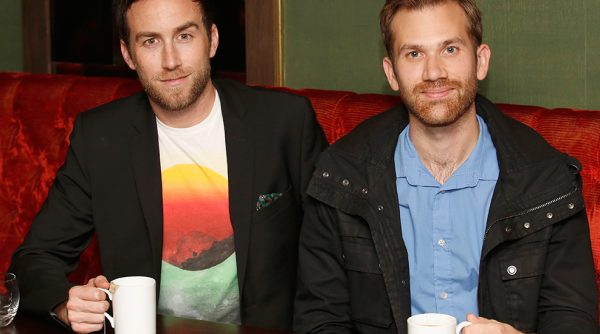
Justin Benson, Aaron Moorhead via Variety
Kelly McNeely: I noticed that time is sort of an ongoing theme with your films — it’s something that you like to explore a little bit. Can you talk about why time is such a fascinating concept, and why that’s something you keep coming back to?
Aaron Moorhead: I think we keep coming back to time because it scares us. It is an inexorable fact, we should be able to be comfortable with that fact. But we basically spend our entire lives trying to become comfortable with the fact that time will pass, everything you know will fall apart, and you eventually will as well. Everyone tries to become comfortable with it, that is one of the lifelong struggles. And the more comfortable you can be with it, the happier you will be. And that’s kind of what the movie is. But, it’s a fact that nobody in the world has accepted it, except for when you achieve Nirvana.
Kelly McNeely: As far as filming in New Orleans, was that sort of always the plan? Or did you just sort of decide, you know, we should do this here?
Justin Benson: The script is written specifically for New Orleans. It’d be such a huge rewrite, to put it in a different city. It’s written for New Orleans, because if you’re kind of stripping away the layers of time, there’s not really a better city in America to do that. I don’t know about drug laws in other countries, but I don’t know if there’s anywhere besides the UK where there are designer synthetic analog sold over the counter. I don’t know, here in Canada are there those?
Kelly McNeely: To a certain extent. I don’t think there are quite as many, but there are things you can buy.
Justin Benson: Probably like K1 and Spice. Not, like, bath salts or anything.
Kelly McNeely: No, we’re not that far yet.
Justin Benson: I was researching bath salts recently. And it turned out that, you know, there’s like instances of like, the guy who ate the guy’s face off, but it turns out that was not related to bath salts. That was just someone with mental illness.
Kelly McNeely: He just wanted to eat someone’s face.
Justin Benson: Yeah. But I’m almost curious, how did the bath salts thing end up in the press?
Who knows? And, by the way, they’re probably very dangerous, but there’s no peer reviewed medical journals about whatever these are. That’s the whole point of the marketplace, because they’re not studied. But yeah, it’s interesting. And I think there’s like a few different instances of that, where it’s like, oh, it actually had nothing to do with bath salts.
Kelly McNeely: I think having the synthetic drugs really opens up the possibilities of what you can do with that, because really, if you’re creating the synthetic drug, you can have it do anything you want, right?
Aaron Moorhead: That’s something that is really fun, the idea. I mean, synthetic drugs are honestly kind of scary, because it’s just like buying them from a drug dealer. They’re both unregulated, except the other one’s deliberately changing the drug [laughs]. So it’s really scary!
Justin Benson: The drug dealer ones are more reliable.
Kelly McNeely: Now, I noticed that you guys have a lot of really elaborate, really expansive set pieces that you got to play with. What was that like? Moving up to that the giant — I don’t want to say what some of the scenes are — but running through fields and things like that.
Aaron Moorhead: It’s something we actually always wanted to do, so that was not a daunting task at all, it was a “thank God, we finally get to do this”. In some ways, that step up felt a bit claustrophobic, because there’s so many more moving parts that once you lock into something, there’s no changing direction, especially if a misunderstanding happens.
But in other ways, it’s freeing because the really largest — the largest of the large stuff — was super smooth. They were something we just planned a whole lot. And then we just did it, and it was great. But it was funny, because it was only a few days of that where we were just like, man, we’ve got so many more resources, despite still being the smallest movie shooting in New Orleans at that time — it’s still a very small movie.
We were like, oh, all the parts of our brain that we use when we’re doing everything, they’re still all just lit up. If you were to take an MRI of us right then. Your mind is still thinking like, where’s the boom operator going to stand? You know, it’s still thinking of just editing in your head. And so we realized that honestly, the process didn’t really change. Just the actual physical things that are in front of the camera do.
Kelly McNeely: You guys do a lot of behind the scenes stuff — the editing and cinematography, things like that. Do you find that that is a lot more freeing for you? Does it give you a lot more flexibility, or do you find it more stressful?
Justin Benson: It’s the only way you really know how to do things. The process of discovery has become doing it — like getting your hands dirty, and figuring it out. But that said, the editor we work with has become a much better editor that we are on our own. But we still need to be doing it ourselves just to figure out how these things work best.
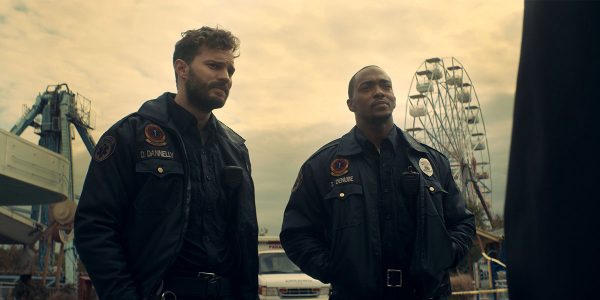
Synchronic via TIFF
Kelly McNeely: So working with Jamie Dornan and Anthony Mackie, how did that come into being?
Aaron Moorhead: There was an agent who just really likes independent film, who wandered into the last screening of The Endless at the North Hollywood indie theater, and went bonkers over it. And one of his clients was Jamie, and he was able to get it to him. And it was like a three day thing — it was just like, all right, let’s do it. And all of a sudden, once we had Jamie, that’s one of those things where you can then say, hey, who are the actors that we want to work with that have always wanted to work with Jamie. And Anthony was one of them. Luckily, he read the script and responded the same way. So it was very fast when it happened.
But the script was written in 2015. And until that person wandered into a movie theater, you know, we were making The Endless. But yeah, they were they were absolutely wonderful. First off, their existence made the movie happen. And then second off, their performance and their personalities off camera just made the whole thing easy.
Kelly McNeely: What do you guys love about working in genre cinema specifically? I know that’s a very broad question.
Aaron Moorhead: I like being able to hide the things that we want to talk about inside of a fantastic concept like a Trojan horse. Whereas if you don’t have the fantastic concept, it can either be boring or really proselytizing. But for us we can, we can hopefully make a movie that changes you by entertaining you. And you realize that something’s different by the end.
Kelly McNeely: And sort of speaking that Trojan horse, what did you want to try and sneak in with Synchronic? Was there anything specific?
Justin Benson: You know, there’s a very unfortunate movement in America right now to romanticize a past that was only good for a very small subset of the population. And that’s all based in the myth that there was this time that was so great. And that’s not honest. And there was something about telling a story about showing the past for the monster that it was.
Kelly McNeely: There’s no “great again”, right?
Aaron Moorhead: Yeah, the past sucks, and the present is a miracle. Those are both lines in the movie, but, that’s what we’re saying.
Kelly McNeely: What’s next for you guys? I know you usually have a bunch of projects on the go. What do you want to do next?
Aaron Moorhead: We have a new feature written, and we’re probably going to try to shoot that as soon as possible. As soon as this this is all wrapping up. And I think Synchronic will probably open some doors in terms of the real big stuff. So we’ll see on all of that, but nothing that I can — sorry about the vague, lame answer, but it’s not even that I don’t want to talk about it or I’m sworn to secrecy. It’s just if it doesn’t happen, then that’s just even lamer, you know? [laughs]
Kelly McNeely: Now with New Orleans, I know it’s such a rich historical place. Were there locations or settings that you wanted to really include or highlight?
Justin Benson: Interesting. I think some of the script was written from a memory of taking a trip to New Orleans. So it was written for like, what those locations were in our head. But then Aaron and I went and scouted it in 2016 — there was no financing, we just went literally by ourselves and looked around for locations to see what would work. And it turned out that from memory, those things were more or less correct. But then there were things that we didn’t even know existed when we put them in the script, like where the boulder is, for example. That was just an estimation of like, “this probably exists because the Mississippi River is right there”, and it turned out it was right there.
Aaron Moorhead: Abandoned Six Flags was always in the script. And our location manager was sweating bullets trying to make sure that we got it, because it’s a very hard location to shoot in. It’s been taken over by the wildlife and it’s dangerous. But, but yeah, I mean, that was cool.
Justin Benson: Yeah, and I think actually some of those locations were written out of like, Atlas Obscura website, like “what’s weird and creepy in New Orleans”, and finding it that way. So we’re really lucky we actually got to shoot in those places.
Kelly McNeely: The abandoned Six Flags is really amazing, that must have been such a cool location to shoot in.
Justin Benson: Yeah, they tell you they’re like it’s really hard because it’s all taken over by alligators and rattlesnakes. I only saw like three alligators there.
Aaron Moorhead: A few alligators. It’s because we had alligator wranglers. They were pros.
Kelly McNeely: Now this again is a very broad question, and I know the past sucks. But if you had to or could travel back to any particular time, would you want to, and when would you like to go back to?
Aaron Moorhead: You mean just to live in, or to warn the world about climate change?
Kelly McNeely: Both. Either or. You don’t have you stay there. You can have seven minutes there.
Aaron Moorhead: Got it, got it. Seven minutes. Ok.
Justin Benson: Oh, man. I think I don’t want to.
Aaron Moorhead: I don’t think I want to either.
Kelly McNeely: The past sucks.
Aaron Moorhead: [laughs] Yeah. The past just sucks. Yeah. I just think about like going back and being like, oh, man. All right. So there’s the early 2000s, like what Limp Bizkit, what? No, hang on, and then it’s like 90s shoulder pads? Ah! I can’t think of when in the 80s… Actually, no, I’d love to see The Stones really young on tour. That would be fun for seven minutes. Yeah, just to hear them play Satisfaction during the protest there. That would be cool.
For more on Justin Benson and Aaron Moorhead, check out our previous interview talking about The Endless.
Listen to the 'Eye On Horror Podcast'

Movie Reviews
Panic Fest 2024 Review: ‘The Ceremony Is About To Begin’
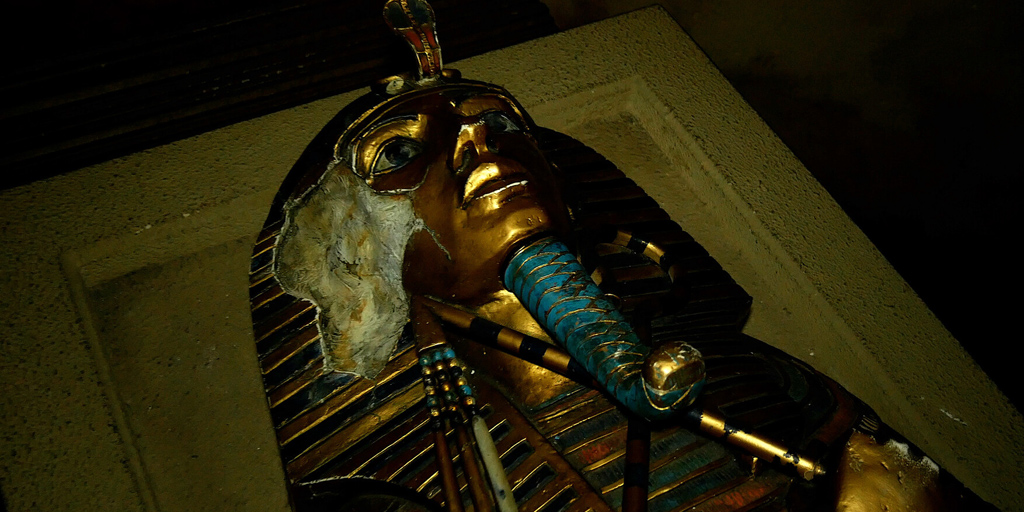
People will look for answers and belonging in the darkest places and the darkest people. The Osiris Collective is a commune predicated upon ancient Egyptian theology and was run by the mysterious Father Osiris. The group boasted dozens of members, each forgoing their old lives for one held in the Egyptian themed land owned by Osiris in Northern California. But the good times take a turn for the worst when in 2018, an upstart member of the collective named Anubis (Chad Westbrook Hinds) reports Osiris disappearing while mountain climbing and declaring himself the new leader. A schism ensued with many members leaving the cult under Anubis’ unhinged leadership. A documentary is being made by a young man named Keith (John Laird) whose fixation with The Osiris Collective stems from his girlfriend Maddy leaving him for the group several years ago. When Keith gets invited to document the commune by Anubis himself, he decides to investigate, only to get wrapped up in horrors he couldn’t even imagine…

The Ceremony Is About To Begin is the latest genre twisting horror film from Red Snow‘s Sean Nichols Lynch. This time tackling cultist horror along with a mockumentary style and the Egyptian mythology theme for the cherry on top. I was a big fan of Red Snow‘s subversiveness of the vampire romance sub-genre and was excited to see what this take would bring. While the movie has some interesting ideas and a decent tension between the meek Keith and the erratic Anubis, it just doesn’t exactly thread everything together in a succinct fashion.
The story begins with a true crime documentary style interviewing former members of The Osiris Collective and sets-up what led the cult to where it is now. This aspect of the storyline, especially Keith’s own personal interest in the cult, made it an interesting plotline. But aside from some clips later on, it doesn’t play as much a factor. The focus is largely on the dynamic between Anubis and Keith, which is toxic to put it lightly. Interestingly, Chad Westbrook Hinds and John Lairds are both credited as writers on The Ceremony Is About To Begin and definitely feel like they’re putting their all into these characters. Anubis is the very definition of a cult leader. Charismatic, philosophical, whimsical, and threateningly dangerous at the drop of a hat.
Yet strangely, the commune is deserted of all cult members. Creating a ghost town that only amps up the danger as Keith documents Anubis’ alleged utopia. A lot of the back and forth between them drags at times as they struggle for control and Anubis keeps continuing to convince Keith to stick around despite the threatening situation. This does lead to a pretty fun and bloody finale that fully leans into mummy horror.
Overall, despite meandering and having a bit of a slow pace, The ceremony Is About To Begin is a fairly entertaining cult, found footage, and mummy horror hybrid. If you want mummies, it delivers on mummies!

Listen to the 'Eye On Horror Podcast'
News
“Mickey Vs. Winnie”: Iconic Childhood Characters Collide in A Terrifying Versus Slasher

iHorror is diving deep into film production with a chilling new project that’s sure to redefine your childhood memories. We’re thrilled to introduce ‘Mickey vs. Winnie,’ a groundbreaking horror slasher directed by Glenn Douglas Packard. This isn’t just any horror slasher; it’s a visceral showdown between twisted versions of childhood favorites Mickey Mouse and Winnie-the-Pooh. ‘Mickey vs. Winnie’ brings together the now-public-domain characters from A. A. Milne’s ‘Winnie-the-Pooh’ books and Mickey Mouse from the 1920s ‘Steamboat Willie’ cartoon in a VS battle like never before seen.
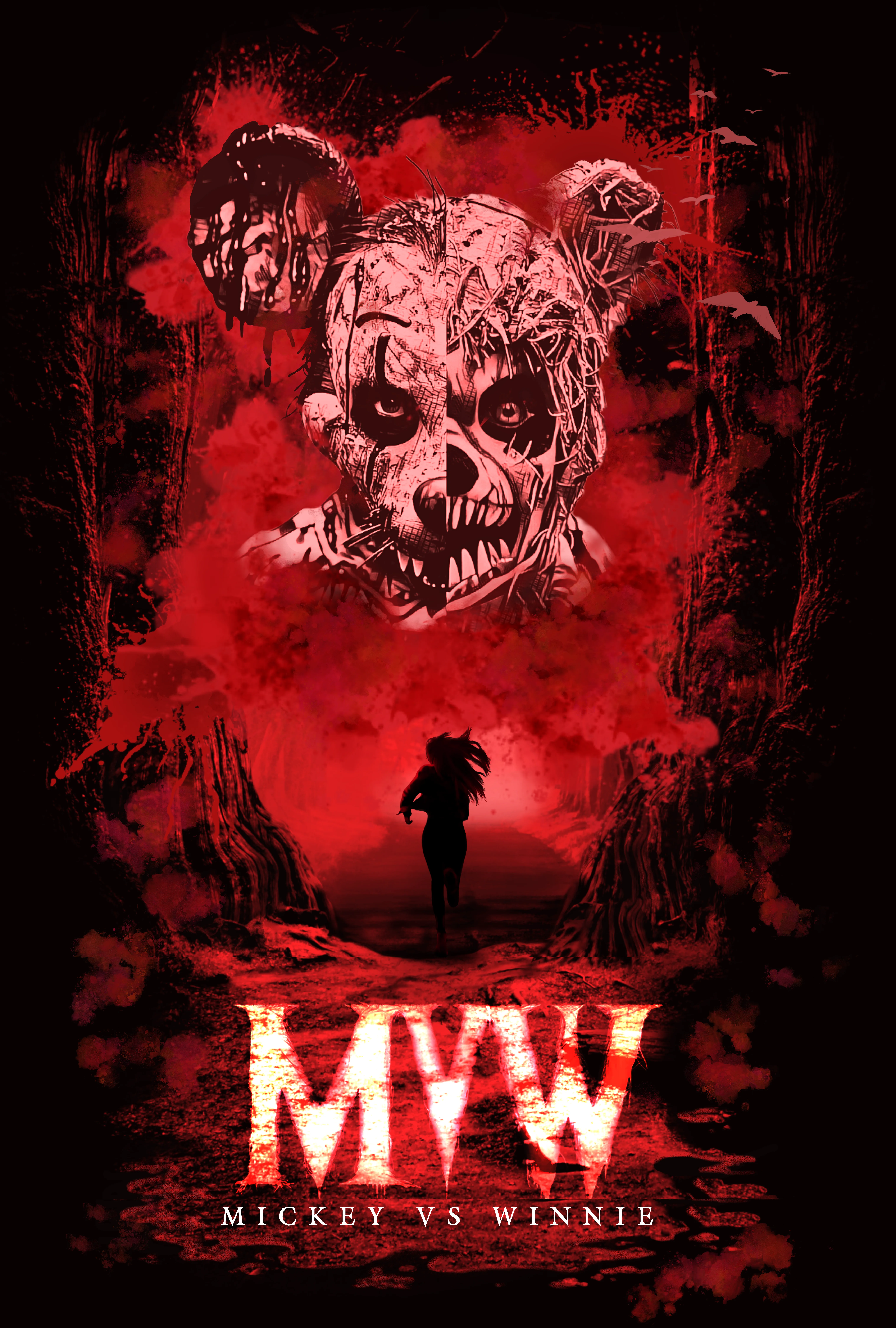
Set in the 1920s, the plot kicks off with a disturbing narrative about two convicts who escape into a cursed forest, only to be swallowed by its dark essence. Fast forward a hundred years, and the story picks up with a group of thrill-seeking friends whose nature getaway goes horribly wrong. They accidentally venture into the same cursed woods, finding themselves face-to-face with the now monstrous versions of Mickey and Winnie. What follows is a night filled with terror, as these beloved characters mutate into horrifying adversaries, unleashing a frenzy of violence and bloodshed.
Glenn Douglas Packard, an Emmy-nominated choreographer turned filmmaker known for his work on “Pitchfork,” brings a unique creative vision to this film. Packard describes “Mickey vs. Winnie” as a tribute to horror fans’ love for iconic crossovers, which often remain just a fantasy due to licensing restrictions. “Our film celebrates the thrill of combining legendary characters in unexpected ways, serving up a nightmarish yet exhilarating cinematic experience,” says Packard.
Produced by Packard and his creative partner Rachel Carter under the Untouchables Entertainment banner, and our very own Anthony Pernicka, founder of iHorror, “Mickey vs. Winnie” promises to deliver an entirely new take on these iconic figures. “Forget what you know about Mickey and Winnie,” Pernicka enthuses. “Our film portrays these characters not as mere masked figures but as transformed, live-action horrors that merge innocence with malevolence. The intense scenes crafted for this movie will change how you see these characters forever.”
Currently underway in Michigan, the production of “Mickey vs. Winnie” is a testament to pushing boundaries, which horror loves to do. As iHorror ventures into producing our own films, we’re excited to share this thrilling, terrifying journey with you, our loyal audience. Stay tuned for more updates as we continue to transform the familiar into the frightful in ways you’ve never imagined.
Listen to the 'Eye On Horror Podcast'
Movies
Mike Flanagan Comes Aboard To Assist in Completion of ‘Shelby Oaks’

If you have been following Chris Stuckmann on YouTube you are aware of the struggles he has had getting his horror movie Shelby Oaks finished. But there’s good news about the project today. Director Mike Flanagan (Ouija: Origin Of Evil, Doctor Sleep and The Haunting) is backing the film as a co-executive producer which might bring it much closer to being released. Flanagan is a part of the collective Intrepid Pictures which also includes Trevor Macy and Melinda Nishioka.
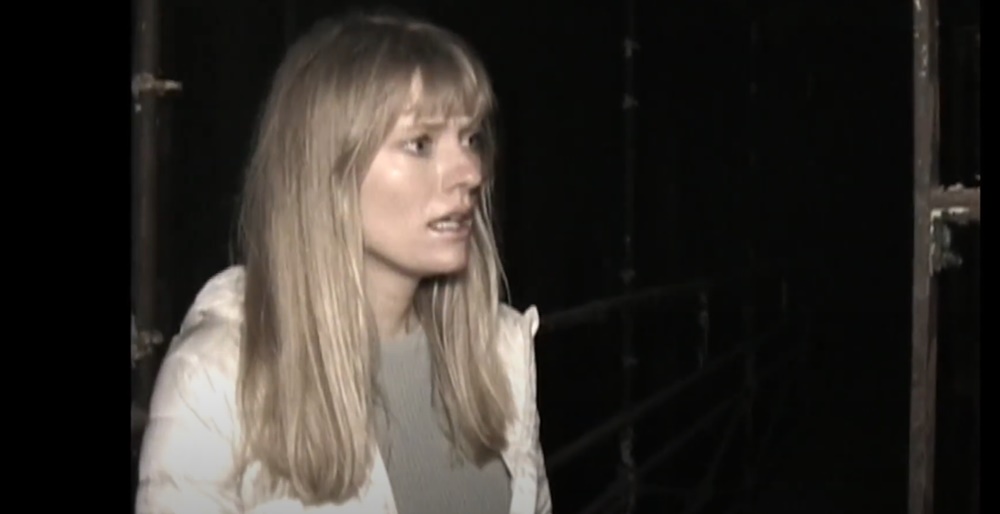
Stuckmann is a YouTube movie critic who’s been on the platform for over a decade. He came under some scrutiny for announcing on his channel two years ago that he would no longer be reviewing films negatively. However contrary to that statement, he did a non-review essay of the panned Madame Web recently saying, that studios strong-arm directors to make films just for the sake of keeping failing franchises alive. It seemed like a critique disguised as a discussion video.
But Stuckmann has his own movie to worry about. In one of Kickstarter’s most successful campaigns, he managed to raise over $1 million for his debut feature film Shelby Oaks which now sits in post-production.
Hopefully, with Flanagan and Intrepid’s help, the road to Shelby Oak’s completion is reaching its end.
“It’s been inspiring to watch Chris working toward his dreams over the past few years, and the tenacity and DIY spirit he displayed while bringing Shelby Oaks to life reminded me so much of my own journey over a decade ago,” Flanagan told Deadline. “It’s been an honor to walk a few steps with him on his path, and to offer support for Chris’ vision for his ambitious, unique movie. I can’t wait to see where he goes from here.”
Stuckmann says Intrepid Pictures has inspired him for years and, “it’s a dream come true to work with Mike and Trevor on my first feature.”
Producer Aaron B. Koontz of Paper Street Pictures has been working with Stuckmann since the beginning is also excited about the collaboration.
“For a film that had such a hard time getting going, it’s remarkable the doors that then opened to us,” said Koontz. “The success of our Kickstarter followed by the on-going leadership and guidance from Mike, Trevor, and Melinda is beyond anything I could have hoped for.”
Deadline describes the plot of Shelby Oaks as follows:
“A combination of documentary, found footage, and traditional film footage styles, Shelby Oaks centers on Mia’s (Camille Sullivan) frantic search for her sister, Riley, (Sarah Durn) who ominously disappeared in the last tape of her “Paranormal Paranoids” investigative series. As Mia’s obsession grows, she begins to suspect that the imaginary demon from Riley’s childhood may have been real.”
Listen to the 'Eye On Horror Podcast'
-
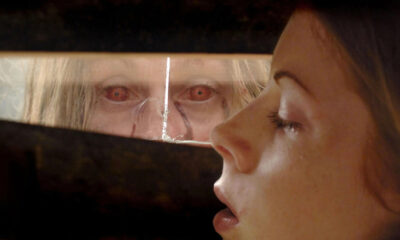
 Movies7 days ago
Movies7 days ago’28 Years Later’ Trilogy Taking Shape With Serious Star Power
-
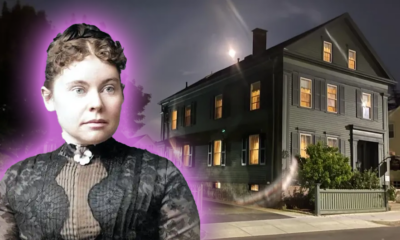
 News6 days ago
News6 days agoWin a Stay at The Lizzie Borden House From Spirit Halloween
-

 Movies5 days ago
Movies5 days ago‘Evil Dead’ Film Franchise Getting TWO New Installments
-
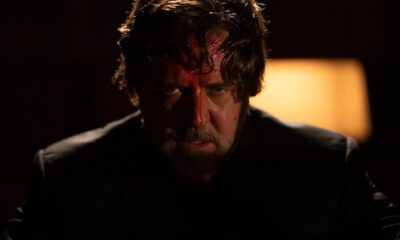
 Movies6 days ago
Movies6 days agoTrailer for ‘The Exorcism’ Has Russell Crowe Possessed
-
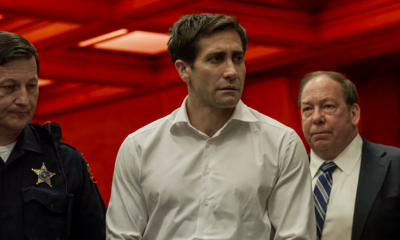
 News6 days ago
News6 days agoJake Gyllenhaal’s Thriller ‘Presumed Innocent’ Series Gets Early Release Date
-
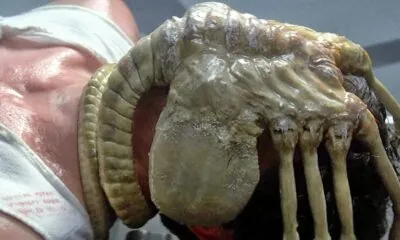
 Movies5 days ago
Movies5 days agoFede Alvarez Teases ‘Alien: Romulus’ With RC Facehugger
-
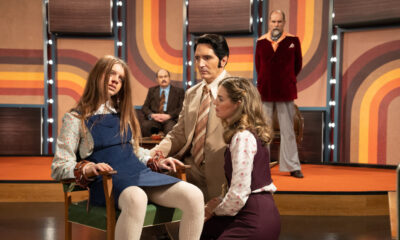
 Movies3 days ago
Movies3 days ago‘Late Night With the Devil’ Brings The Fire to Streaming
-
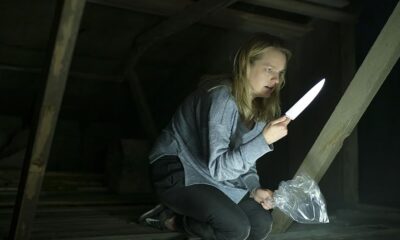
 Movies5 days ago
Movies5 days ago‘Invisible Man 2’ Is “Closer Than Its Ever Been” to Happening
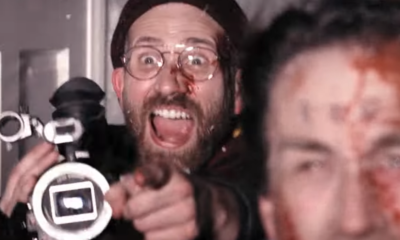

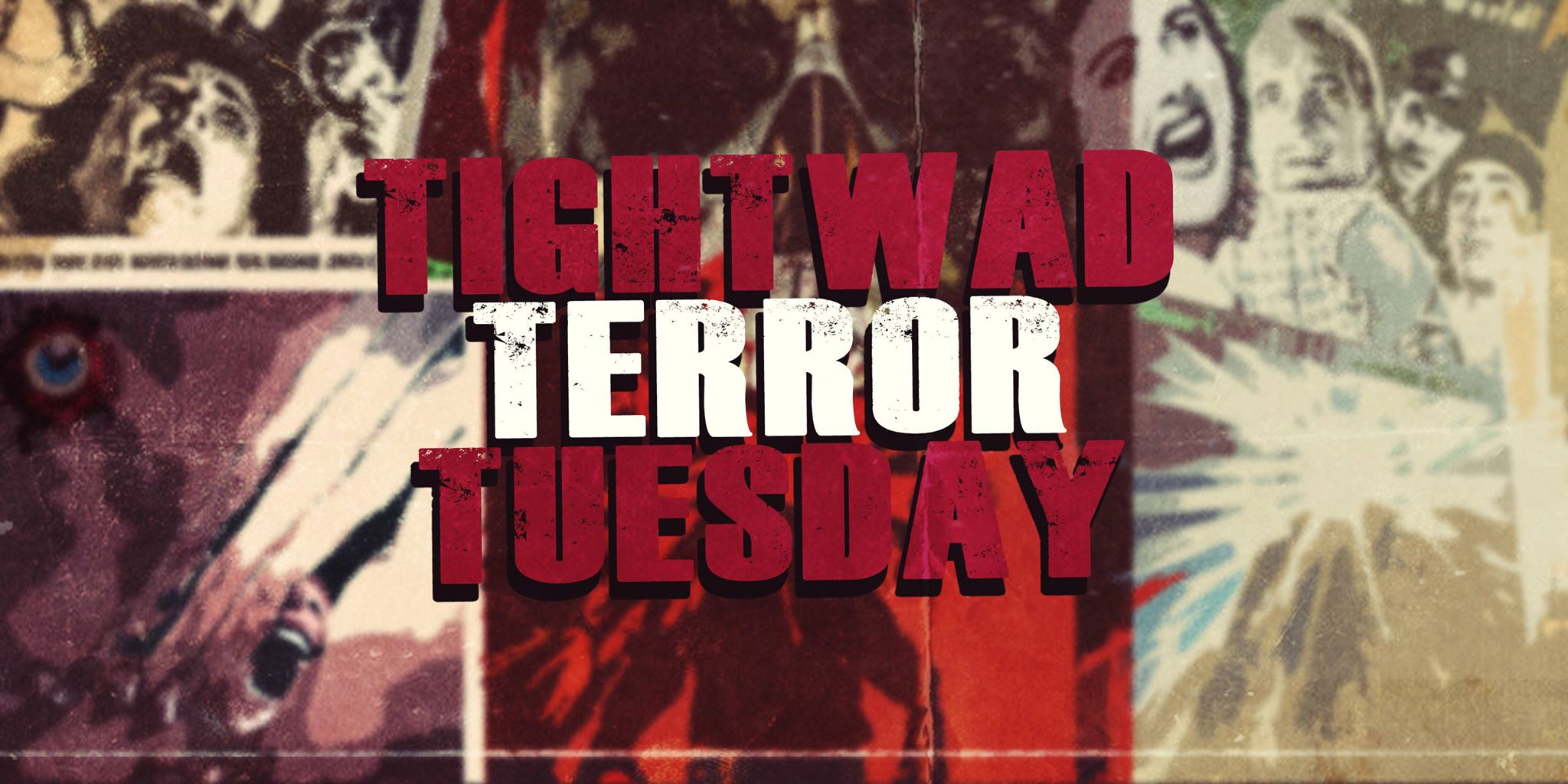
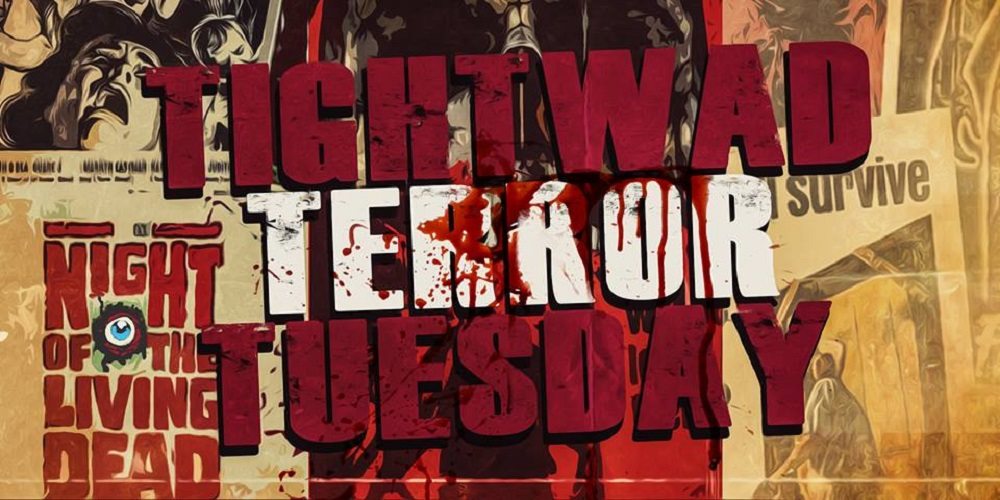













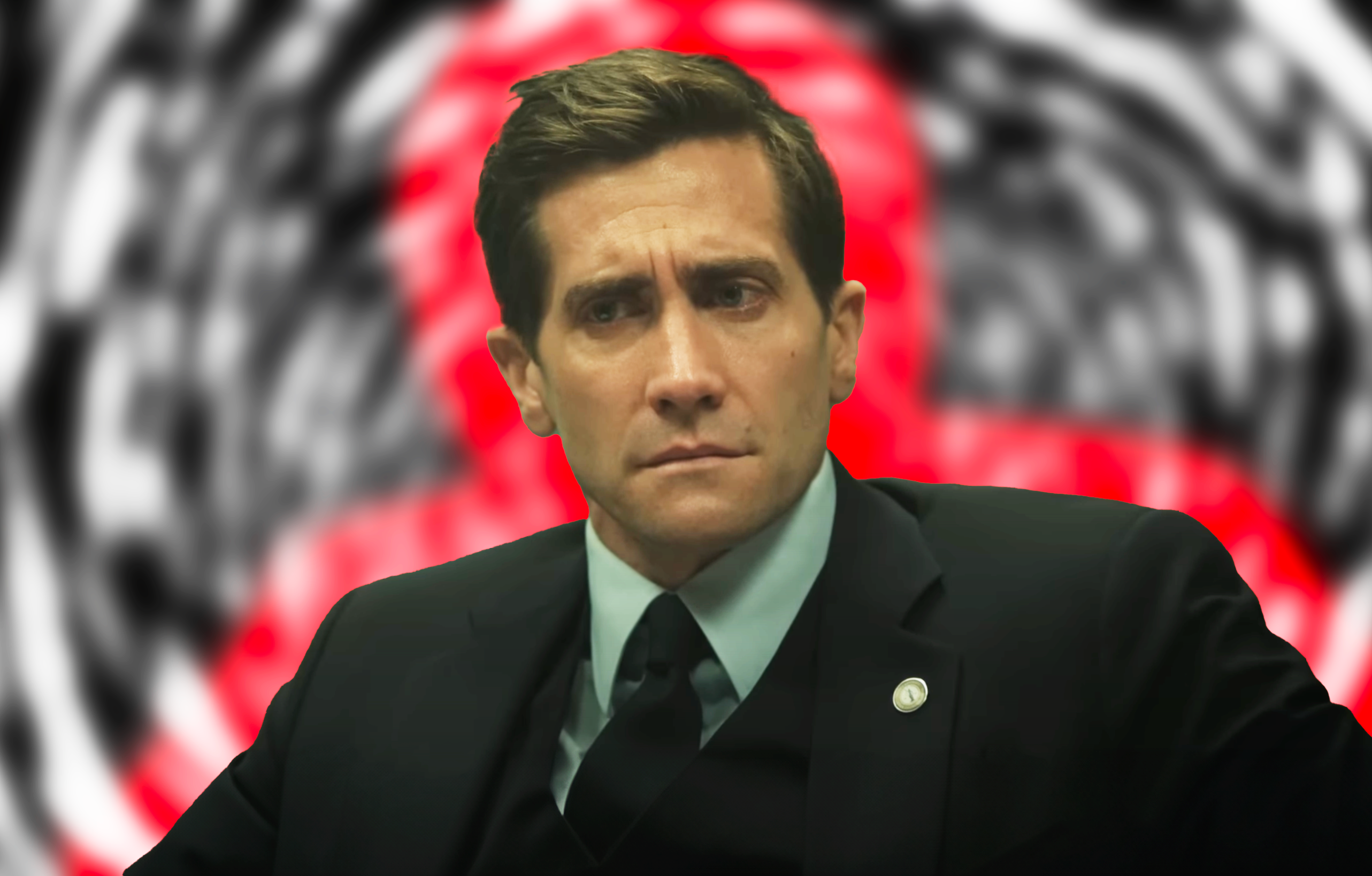







You must be logged in to post a comment Login